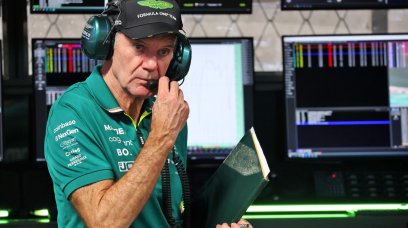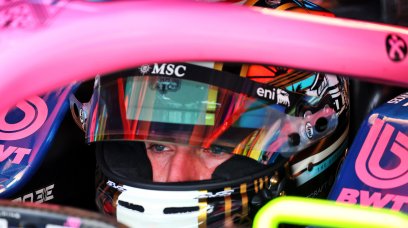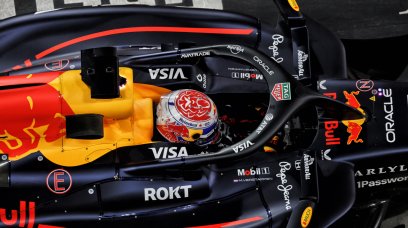While the procedures to be followed by prospective Formula 1 teams under the FIA’s Expression of Interest (EoI) process - which opens today and closes 17 February - differ little from those adhered to by Haas in 2014/5 prior to the US team’s 2016 entry, the fine print outlines various significant selection criteria which could ultimately make or break an application. Where before the evaluation process was essentially limited to examining aspects such as management, commercial and technical factors, considerations such as societal impact and sustainability indices will now be ranked equal with (if not higher than) the traditional aspects. Thus, the EoI refers specifically to sustainability and EDI (equality, diversity and inclusion) factors, none of which were previously granted much relevance, while issues such as the “integrity and reputation” of prospective entrants could play decisive roles. Note: While none of the foregoing implies that Haas would not have satisfied such requirements in 2016, the fact is the world has moved on enormously in a decade. While the full extent of the submissions will remain secret – a bilateral non-disclosure agreement forms part of the submissions – the final acceptance list will provide pointers as to the processes followed and the relative importance of various criteria. The process itself will be in three phases: Screening of candidates (17 February), full submissions of all data as required (30 April) and final selection (30 June). Intriguingly, the EoI press release does not specify how many teams could eventually be accepted. This has led some media to speculate that up to two teams will be selected, but here’s a clue that the final number could be more: Article 8.1 of F1’s Sporting Regulations states “No more than twenty-six (26) cars will be admitted to the Championship, two (2) being entered by each Competitor.” So potentially 13… Equally, the fact that FIA President Mohammed Ben Sulayem recently stated that only Michael Andretti’s eponymous team had expressed any interest does not mean that only one team planned to enter F1. Indeed, RacingNews365.com has learned of at least four prospective entrants, possibly five - including a vocal Andretti Global – the other four have chosen to play their cards extremely close to their chests. Who could they be?
Joining in the 2025 season could pose problems for prospective teams
There is the Panthera syndicate as revealed by this journalist in 2019, which kept its ambitions alive through Covid, while F2 outfit Hitech - once linked to the Mazepins and believed to still be in contact with the Russian family - is said to have expressed an interest. Then there is a Swiss-based bid already in the making for four years, while Daniel Audetto’s Monaco-based project is still believed to be keen. Another intriguing element is that the EoI document is aimed at prospective teams wishing “to participate at a competitive level in the FIA Formula One World Championship as from the start of the 2025, 2026, or 2027 season.” While there are no clues as to whether an earlier entry would be given preference, the fact that 2025 is specified as a potential first season introduces a number of commercial and technical conundrums. The 2025 entries would require cars to be built for a single season given it is all change for 2026: although only power unit regulations have been ratified to date these require substantial chassis changes to accommodate 500bhp hybrid elements (up from the current 160bhp). Then, 2025 is the last year under the Concorde Agreement, which demands a $200m ‘anti-dilution’ fee from new teams, shared amongst existing entrants. Think about it: Teams wishing to enter in 2025 would need to build completely new cars with few carryover parts for a single season, PLUS shell out $200m - an average of $20m - to each of its competitors under an arguably illegal contract that expires that year. While some team bosses argue the fee should increase, others believe it should be scrapped on the basis of anti-competitive conduct, so waiting a year could save $200m.
Just being selected is a victory in itself
All in, it makes little sense for new teams to enter in 2025 unless they desperately hope to use that season as learning year regardless of financial complications or have contractual obligations to enter within a particular timeframe. To do so would need to secure single-year PU contracts from one of four current suppliers, the obvious target being Renault - which services only its own team - but may not wish to sign one-year deals. That is when the FIA would be called upon to intervene - as the governing body is empowered to do by the regulations - which would likely nominate the French company on the basis that it is least represented on the grid. However, it gets more complex should two (or three) teams be accepted for 2025: Honda and Ferrari are likely to be nominated, but who gets which PU supplier, in which sequence and on what terms? There are, though, no such restrictions from 2026, when six suppliers are listed - confirmation that Audi, Ferrari, Honda, Mercedes, Red Bull Powertrains and Renault all registered under PU2026 regulations is expected from the FIA sooner rather than later - effectively making it an average of two teams per supplier, in turn suggesting that any 2025 entrants will likely need to switch PUs after a season. In conclusion, the conundrum facing prospective teams is: Tick the maximum number of boxes on EDI and sustainability fronts while evaluating the full financial, technical and sporting implications of any decision taken within any Concorde Agreement and PU supply clauses as may be imposed by the FIA, FOM (F1) and other stakeholders. They may, of course, also decide to challenge the $200m fee in the courts. Now consider that EoI is timebound by an initial 14-day competitive selection process against various equally determined bids, and the scale of the challenge is clear. Being selected for the second phase will be akin to a front row start while making the final cut will be a victory in itself. The FIA’s eight main selection criteria for new teams: Technical ability and resources of team. Ability of team to raise and maintain sufficient funding to meet financial obligations and allow participation in F1 at a competitive level. Ability of team to comply with obligations under F1 Sporting, Technical, and Financial Regulations. Detailed business plan (including financial projections) for first 5 years of project. Team capabilities in automotive/motorsport sectors incl. technical/racing experience, facilities, equipment/engineering resources and qualified staff/headcount. Individuals proposing to participate in ownership/control/management are fit and proper persons. Considerations of sustainability, EDI (Equality, Diversity, Inclusion), and societal benefits. FIA’s assessment of value that candidates may bring to F1, including reputation and integrity.
Most read






